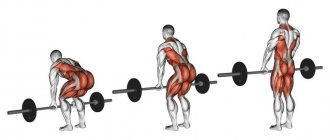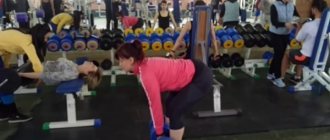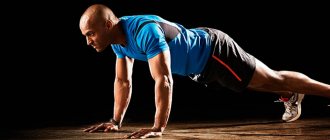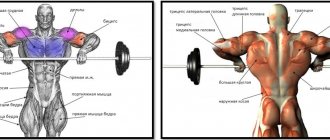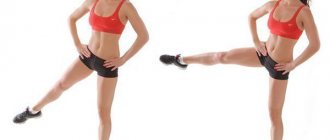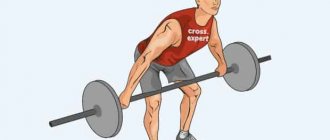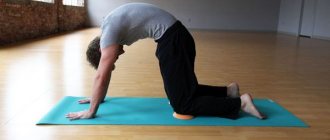Benefits of Deadlifts
According to professionals, powerlifting and bodybuilding are unthinkable without deadlift, which provides an indispensable basis for optimal muscle mass gain.
The fact is that when performing a deadlift, the main load falls on the spinal erectors, on the muscles of the thighs and buttocks, and also on the latissimus dorsi muscles. It can be argued that this exercise is the best of all strength exercises, since pumping up bulky muscles during deadlifting occurs much better than when working the same muscles in isolation. When performing a deadlift, that is, in the case of involving a large group of muscles, complex, but very effective processes associated with biomechanics are activated in the athlete’s body.
They can significantly improve the metabolism in the body, and therefore the processes responsible for the growth of muscle mass. Among other things, deadlift perfectly strengthens almost all tendons and joints, and this is an additional incentive for body growth. It has been observed that athletes who regularly perform this complex exercise invariably progress in the growth of lean body mass and achieve noticeable improvements in results in many other exercises.
Sumo deadlift
The sumo-style deadlift, unlike other varieties, can be recognized simply by the visually sharply different position of the legs. Here the legs are spread as wide as possible, the pelvis turns with the inner surface of the thigh forward and looks in the same direction as the body. The hands are placed strictly between the legs.
The fundamental difference between the sumo deadlift technique and the classic one is that the buttocks receive a minimum load, while the inner thigh surface is subject to maximum load. It turns out that the trainee himself determines which option to choose and what effect he wants to get as a result: pumping the gluteal muscles or working out the inner thigh surface.
The ideal option is to alternate the described techniques. This way you can work out the maximum number of muscle groups involved and pump up your muscles to the fullest.
Danger awaiting the athlete
It must be remembered that for all its benefits, the deadlift is a dangerous exercise. If the technique is incorrect or if you lift a lot of weight, there is a danger of damaging the spine, since in this case too much stress is placed on the spinal discs. As a result, vertebral displacement may occur. To maintain your health, people with existing back injuries (even minor ones) should avoid performing the exercise, do not increase the weight too quickly, and warm up and stretch before each exercise. In fairness, it is worth adding that, according to statistics, those athletes who do not do deadlifts most often injure their backs.
Exercise technique
Understanding the benefits of deadlifts for men and the dangers of the exercise, it is necessary to minimize all risks, paying special attention to the execution technique.
Typically, the classic deadlift is characterized by the following exercise pattern: narrow stance of the legs, as well as close positioning of the barbell to the shin. When bending your knees to grasp the barbell, keep your back straight and your head facing forward. In the initial phase of the exercise, the legs are involved in the work, and as the barbell rises, the back is involved. In this case, the bar must be held so that it does not move away from the surface of the legs. When the bar passes the level of the knees, the legs stop participating in the work, and the entire load goes to the back. It is important to keep your back straight, avoiding unnecessary tension. The barbell must be lowered as smoothly as it was raised, tilting the body and then bending the knees to the starting position.
Deadlift: creating a training program to increase weight, develop strength, mass
The deadlift is one of the best strength exercises that engages most muscle fibers throughout the body. However, despite all these benefits, beginners are faced with the following problem: how and when to deadlift?
Therefore, especially for beginners, we will try to figure out how to correctly draw up a plan-program for training deadlifts. I note that you should not blindly follow the proposed schemes. Each athlete is individual and in order to choose the right exercises, it is necessary to proceed from physical data, experience and other factors.
Deadlifts with minimal weight are useful for a wide range of athletes, as they perfectly strengthen the back extensors.
In this article, we will not just provide ready-made deadlift training programs, but will understand the principles of their preparation. This is the main and fundamental aspect that will allow everyone to find the necessary solution for themselves. It will also provide the opportunity to achieve the desired results and go towards the intended goal.
Most existing solutions may not be suitable. Therefore, we will try to learn how to create a training plan on our own in order to constantly progress.
The key to progressing success is to alternate between hard and light workouts, as well as build-up exercises.
Special attention should be paid to warm-up approaches. Deadlift is a traumatic exercise, so all ligaments and joints must be well prepared for work. You can’t cheat, because it can affect your health.
IMPACT OF DEADLIFT ON THE ATHLETE’S BODY
It is not at all necessary to play sports professionally. However, a few hours a week spent in the gym can change our lives for the better. And among the basic exercises that give the maximum effect, the deadlift should be highlighted. Many beginners who perform this exercise with poor technique experience pain in the spine. In order to avoid possible injuries, it is necessary to perform deadlifts in strict accordance with the instructions of the trainer. Then it will turn into a powerful tool for improving your own body.
The level of comfort that modern technology provides to a person is truly impressive. He can order pizza for a group without getting up from his chair, chat on Skype with a friend living on another continent, and earn thousands of dollars without leaving his home. Now he can minimize his physical activity - all the equipment is designed to prevent his slightest whim. But what makes our life comfortable and simple can cause irreparable harm to our body. A sedentary lifestyle causes many diseases, and only sports can overcome them.
Experienced bodybuilders know that deadlifts, performed correctly, are not only incapable of harming the spine, but can also speed up recovery processes after injury and improve the athlete’s posture.
The beneficial effect of deadlifts on the athlete’s body is explained simply: the longitudinal muscles of the back, forced to work intensively, help improve blood circulation in this area. And thanks to the accelerated blood flow along the spinal column, all recovery processes are accelerated. Only manual therapy can give a similar effect.
If a bodybuilder has not performed this exercise before, he should definitely introduce it into his training program. Thus, he will be able to make a qualitative leap in gaining mass and strength. The deadlift perfectly develops the trapezius and lower back muscles, giving the back a beautiful strength profile. In addition, this exercise actively develops the quadriceps and hamstring muscles. Also, muscles such as biceps, calf muscles, forearms, abs and other muscle groups are indirectly involved in deadlifting.
It's best to start learning deadlifts using light weights. This is done from a semi-squat position (on slightly bent legs); the back should be arched.
After the back muscles have become a little stronger, it will be necessary to increase the weight of the barbell, but you should always ensure that the technique is correct.
After just six sessions, the bodybuilder begins to feel how correctly he performs the deadlift. And then he will be able to feel the line, crossing which he risks getting injured. As you know, the spine is the most important center of all our motor functions, so damage to it can put an athlete out of action for a long time.
A good warm-up will help make your workout safer. This is a well-known fact, but, nevertheless, many people neglect warm-up. And since there are many tendons in the lumbar region, which, when not warmed up, are characterized by low elasticity, warming up is simply mandatory before performing a deadlift. Otherwise, even a slight load can cause sprains and tears.
Romanian deadlift
The Romanian deadlift initially positions itself as an exercise aimed at tightening, strengthening and pumping the gluteal muscles. And it is quite often confused with the previously described exercise: deadlift on straight legs. But in fact, their technique is significantly different. And again let's move on to the list of differences, only now dead draft from the Romanian one. What criteria are used to determine the fundamental differences:
- Amplitude. The Romanian deadlift involves pushing the buttocks and pelvis when lifting the barbell forward, and when lowering it back, respectively. Deadlift eliminates the movement of the pelvis - it is essentially in a static state.
- Level of positioning of the bar. The Romanian deadlift involves placing the bar close to the legs. The deadlift characterizes the position of the trainee's body as hanging over the bar.
- Grab. The Romanian deadlift allows the trainee to grasp the bar exclusively with an overhand grip with the palm facing away from him, while the deadlift requires a different grip: you can grasp the bar with your palms both above and below.
- Landing. The Romanian deadlift allows you to keep the barbell from touching the floor - it is basically lowering the bar to the level of the calf muscles, while the deadlift involves the level of lowering the barbell depending on the flexibility of the individual (trainer).
- Focus. The result of working with the Romanian deadlift is a targeted load on the hamstrings and buttocks. Deadlifts specifically target the lower back.
The Romanian deadlift is also quite effective for pumping up the glutes in a single-leg position with a kettlebell. The deadlift technique in this version differs in that forward bends are carried out from a standing position on one leg, while the weight is taken in the opposite hand: the trainee lowers the weight with his right hand while bending forward, while the left leg is lifted off the floor and pulled back , creating a parallel line with the floor. This method of pumping the gluteus maximus muscle is very effective.
What muscles work when deadlifting?
Before you grab the barbell, let's talk about the benefits in more detail. The deadlift is the most effective exercise for working your legs and back. About 75% of the muscles are used throughout the entire workout. The following muscle groups can be pumped especially effectively:
- gluteal;
- back muscles responsible for straightening the spine;
- hamstring biceps.
How many sets and reps should you do for a deadlift?
It all depends directly on the athlete’s goals. In the right hands, the deadlift is an ideal tool for achieving a wide variety of goals. With its help you can train strength, endurance, and build muscle mass.
However, achieving these goals will depend on how many sets and reps are completed. The result will depend on a correctly developed strategy. Therefore, each athlete selects approaches and repetitions exclusively for himself, and under the guidance of a coach, depending on his goals.
Let us remind you that in order to achieve them, it is important not only to do the exercise, but also to maintain the desired rhythm of life.
Types of deadlifts
Like many other exercises, the deadlift has several variations. It is advisable to first master the technique of the classic version and only then move on to others. It is important to spend at least the first couple of workouts with a trainer - this is not a fad, but a necessity.
Classic deadlift, classic for beginners
The technique of execution is presented in phases in the photo below:
- We approach the barbell, place our feet hip-width apart, shins almost touching the bar, toes behind its line.
- We grab the bar with an overhand grip.
- We straighten our back and bring our shoulder blades together, moving our shoulders back and down.
- We are trying to pull the barbell towards us.
- Take a deep breath and smoothly pull the barbell up, resting on your heels. Exhalation occurs at the moment of greatest load.
- We fix the barbell in the upper position for a couple of seconds, move the pelvis back and, with an inhalation, lower the barbell to the level of the knees.
- We squat and return the projectile to its original position.
You are deadlifting correctly if:
- your back is straight;
- shoulders are fixed;
- knees are between hands;
- During movement, the knees point in the same direction as the feet.
Video: Technique for performing classic deadlifts
Video of deadlift technique, classic for beginners.
Deadlift with trap bar
This option differs from the usual one in the use of a barbell, the bar of which is made in the shape of a diamond and has internal handles for gripping. The deadlift can be done half-inhaling; it becomes possible to take on more weight.
The advantage of the “Trap Bar” is that it allows you to achieve a more vertical pull. Thanks to the unusual shape it is much easier to keep your back straight , plus the risk of injury is significantly reduced and the effect of strengthening the back muscles is enhanced . But you should not perform the exercise if you have serious curvature of the spine and intervertebral hernia.
- We load the bar. If you are a beginner, then the weight you need is 30% of the maximum in the classic deadlift.
- We stand inside the trap bar, place our feet shoulder-width apart, feet parallel to each other.
- We sit down slightly and hold hands.
- We tighten our abdominal muscles and slowly align our body, moving our shoulder blades back.
- We get up and pause for a few seconds.
- We descend smoothly.
Deadlift on straight legs
Another frequently used option among analogues of the classic exercise is the deadlift. The correct technique for the classic deadlift is in many ways similar to it, but there is still a difference. What is the difference between these two varieties of the same exercise:
- Firstly, the amplitude of movement. The classic involves pulling from the floor, deadlifting is carried out from the level of the shin.
- Secondly, the position of the legs. In the classics, the legs are rhythmically bent and extended, and the deadlift is carried out in a position with straight legs.
- Thirdly, the emphasis is on the load. The classic exercise transfers the entire load to the back muscle corset, while the deadlift is aimed at pumping the gluteal muscles and the back of the thigh.
- Fourthly, the recommended load. A purely masculine exercise, the traditional deadlift is based on a heavy force load. Deadlifts are performed more often at medium to low intensity.
Thus, girls more often use deadlifts in their training practice. This is explained by the great interest of the fair half in modeling beautiful muscle relief in the gluteal and thigh areas.

